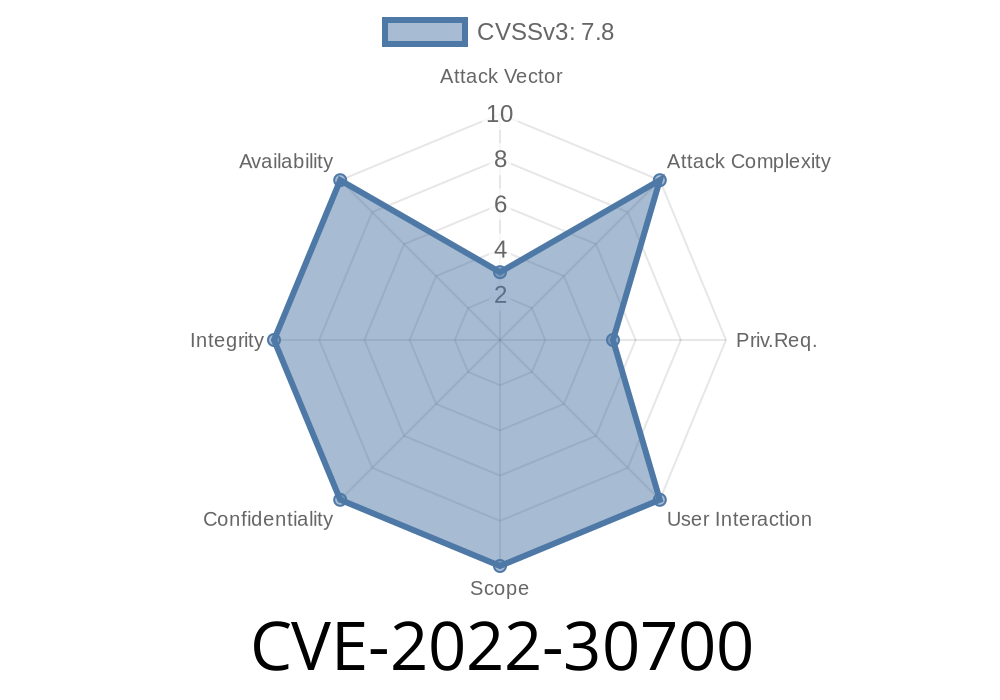A new, high-risk vulnerability (CVE-2022-30700) has been identified in Trend Micro Apex One and Apex One as a Service. This vulnerability could allow a local attacker to load a Dynamic Link Library (DLL) with escalated privileges on affected systems. In this post, we'll explore the details of this vulnerability, how it can be exploited, and the necessary steps for mitigation.
Details
CVE-2022-30700, an incorrect permission assignment vulnerability, affects Trend Micro Apex One and Apex One as a Service. This weakness allows a local attacker to escalate their privileges to a higher level through the loading of a malicious DLL file.
It is essential to note that an attacker must first be able to execute low-privileged code on the targeted system before exploiting this vulnerability. However, if successful, it could open doors to data manipulation, theft, and unauthorized system controls.
Here's a code snippet illustrating the vulnerable DLL loading mechanism
// Vulnerable function
void LoadInsecureDLL() {
HMODULE hModule;
hModule = LoadLibrary(_T("sensitive_library.dll"));
if (hModule) {
// Execute the malicious code within the loaded DLL
ExecuteMaliciousCode(hModule);
FreeLibrary(hModule);
}
}
Create a malicious DLL with the same name as the expected DLL.
4. Place the malicious DLL in a location where the vulnerable application would load it before the legitimate version.
5. Execute the vulnerable application, causing it to load and execute the malicious DLL, potentially with higher privileges.
Trend Micro have acknowledged the vulnerability and provided details related to the issue
- Trend Micro Security Bulletin
- CVE-2022-30700 - NVD Detail Page
Mitigation Steps
Organizations that use Trend Micro Apex One or Apex One as a Service should heed the following steps to protect themselves from this vulnerability:
1. Update the software: Trend Micro has released a patch for Apex One and Apex One as a Service to address the vulnerability. Users should apply the patch as soon as possible:
- Trend Micro Apex One Patch Release Bulletin
2. Restrict access: Limit the number of users with local access on system endpoints, and ensure that proper access controls are in place to limit unauthorized access to critical system resources.
3. Monitor for unusual activity: Continuously monitor system access, file system changes, and abnormal network traffic, and investigate any suspicious activity.
Conclusion
Incorrect permission assignment vulnerabilities like CVE-2022-30700 can pose serious risks to an organization's security. Both users and administrators should be vigilant in keeping track of vulnerabilities, installing patches when available, and implementing best practices for cyber hygiene. By taking these precautions, you are better equipped to prevent unauthorized access and maintain the integrity of your systems.
Timeline
Published on: 05/27/2022 00:15:00 UTC
Last modified on: 06/08/2022 16:21:00 UTC
